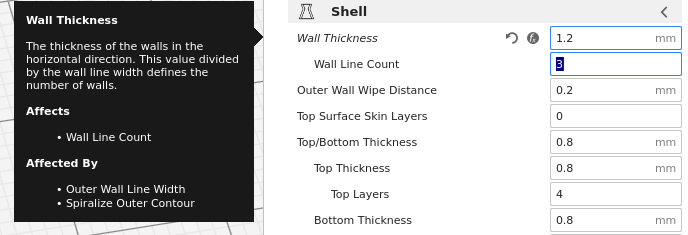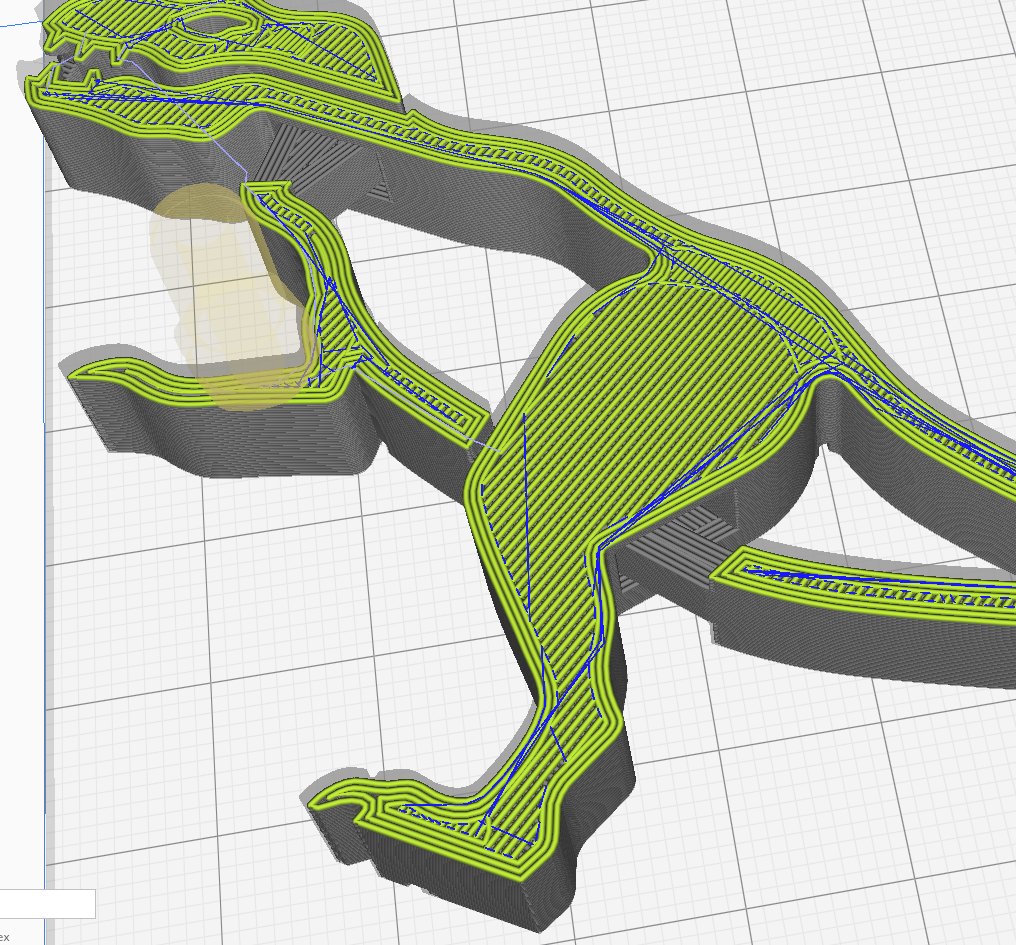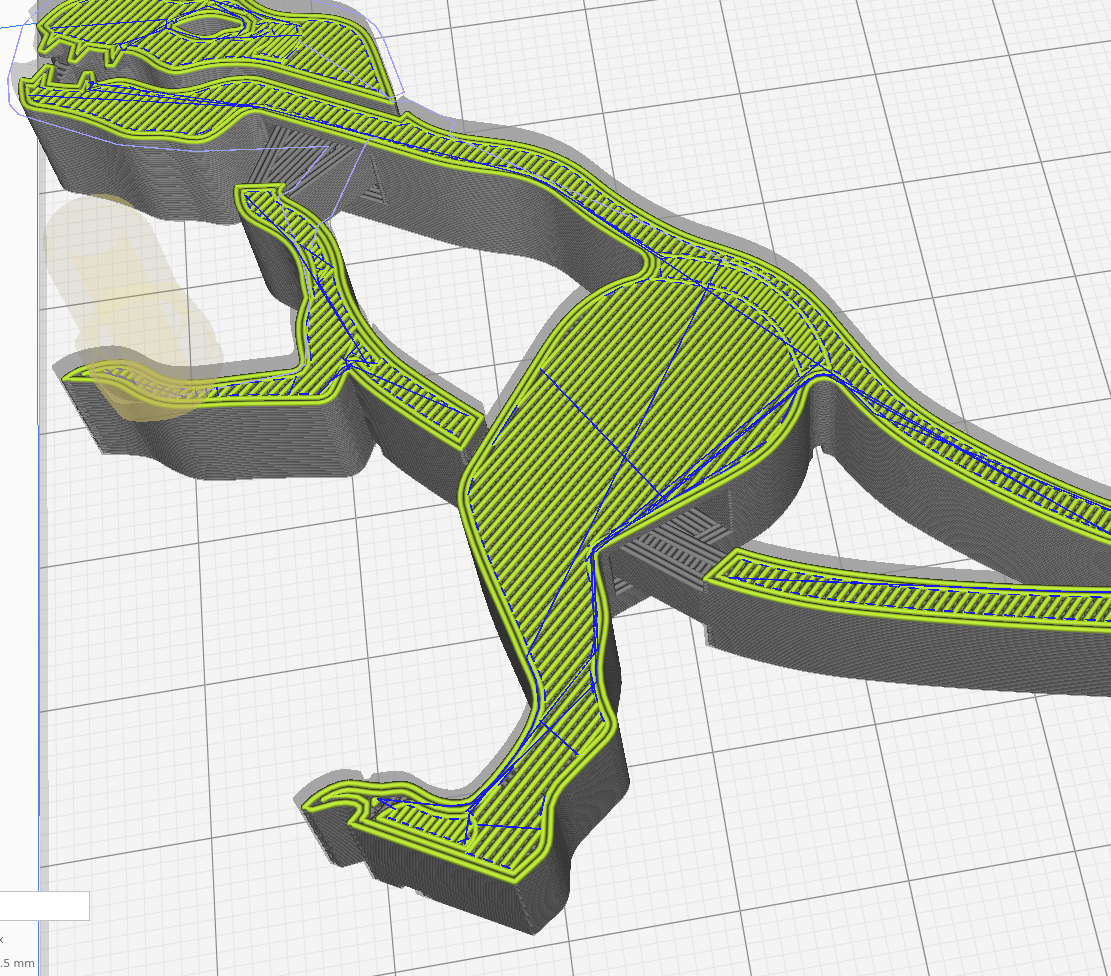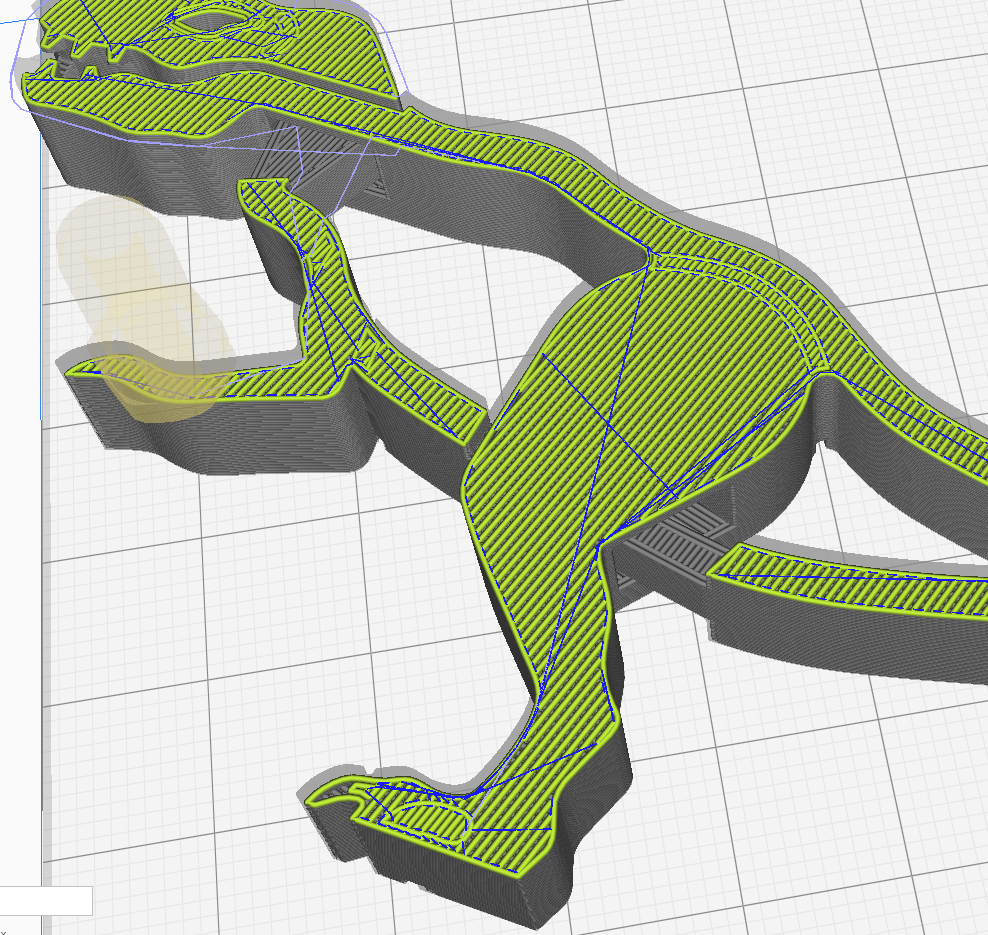Shell
Fleeting- External reference: https://all3dp.com/2/3d-printing-shells-all-you-need-to-know/
3D Printing Shells – All You Need to Know | All3DP
Number of lines of wall to print.

For instance, using the Z-REX.
With 3 shells (0.4 * 3 = 1.2 wall thickness).

With 2 shells.

With 1 shell.

3D printing shells are the outlines or outer perimeters of each layer
— https://all3dp.com/2/3d-printing-shells-all-you-need-to-know/
if you were to set the number of shells (i.e. shell thickness) to the highest available number for the bowl, your 3D printer wouldn’t actually print a bowl. Instead, you will get a solid, curved block, with no “hole”.
— https://all3dp.com/2/3d-printing-shells-all-you-need-to-know/
If you want to refine or sand your 3D prints and then varnish them, for example, it makes sense to increase the thickness of the shells, as refinement usually removes layers from the model. An increased shell thickness can, therefore, mean that a little more can be sanded off and finer details can be worked out without affecting the structure of the model.
— https://all3dp.com/2/3d-printing-shells-all-you-need-to-know/
Increasing the shell thickness also increases the strength of the model
— https://all3dp.com/2/3d-printing-shells-all-you-need-to-know/
rule of thumb is that the shells are usually printed with a thickness of 0.8 mm. This corresponds to 2-3 nozzle diameters, depending on the 3D printer. In most cases, it is important to make sure the shells are a multiple of the nozzle diameter, simply to avoid cavities.
— https://all3dp.com/2/3d-printing-shells-all-you-need-to-know/
wall thickness and the top/bottom layer thickness. For both of these, the thickness to keep in mind is 1.2 mm.
— https://all3dp.com/2/3d-printing-shells-all-you-need-to-know/
Here are some guidelines for thicknesses of walls as well as top and bottom layers:
<1.2 mm will result in lighter and more flexible models at the sacrifice of stability. Models that have very thin walls and/or top/bottom layers will be weak and prone to breakage. >1.2 mm will result in sturdier models with more balance. However, models with very thick walls and/or top/bottom layers can affect the final design of the model
— https://all3dp.com/2/3d-printing-shells-all-you-need-to-know/
bottom must have a certain layer thickness to ensure a stable stand
— https://all3dp.com/2/3d-printing-shells-all-you-need-to-know/
Here are some guidelines for thicknesses of walls as well as top and bottom layers:
<1.2 mm will result in lighter and more flexible models at the sacrifice of stability. Models that have very thin walls and/or top/bottom layers will be weak and prone to breakage. >1.2 mm will result in sturdier models with more balance. However, models with very thick walls and/or top/bottom layers can affect the final design of the model.
— https://all3dp.com/2/3d-printing-shells-all-you-need-to-know/